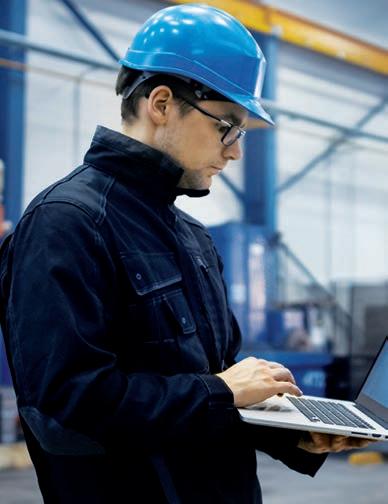
3 minute read
Software Management
Central Innovation now has over 100 staff in various locations across Australia and New Zealand.
SoftwareManufacturing
Embracing manufacturing 4.0
Central Innovation explains the importance of the seamless transfer of data between engineering and production departments.
IN recent years, manufacturing has been focusing on interconnectivity, automation and real-time data. Industrial Internet of Things (IIoT) and smart manufacturing continues to create better connected ecosystems to manage supply chains. Every manufacturer is different. Some businesses have adopted the technology early, some are slowly phasing it into operations and some are staying true to manual data entry. But the need for connectedness and real-time access is becoming more important across the advanced manufacturing landscape.
Shannon Reshno, ANZ executive director of manufacturing solutions, remembers the introduction of more machine-learning capabilities driving Central Innovation’s solutions. He said many early adopters were ready for the technology right away, with traditional manufacturing approaches becoming more disconnected.
“From 2015 onwards, with our yearly presentations, we started off presenting the information in terms of concurrent engineering with all the sales, marketing, manufacturing and logistics,” he said. “The common thread was a vision within manufacturing to have all of these elements connected on one platform.”
Central Innovation continues to improve its model-based solutions and provide engineers, designers, and manufacturers with the design, simulation, verification, manufacturing, file management and collaboration tools that they use to manufacture innovative products and equipment – in one package. The 3D CAD software creates a singlewindow integration and the ability for SOLIDWORKS products to work together. Now there are over 3 million users of it today.
“We made a model to derive all the activities and requirements across the entire enterprise,” Reshno explained. “Product management has always been crucial, but is becoming more and more front of mind for businesses. If they are not on the same page about product information they aren’t able to go to market as quickly as they want to.”
The centre of action, as Reshno calls it, is always with a data management solution in place.
A big element of industry 4.0 is strengthening the connection between the engineering data and the ordering team. Central Innovation’s flagship solution, DataSuite, allows for the transfer of this data without any doubling-up or manual overwriting, which can cost thousands of dollars and many hours of resources. Reshno pointed to Central Innovation’s ability to extend the life of IT systems with links to the enterprise resource planning (ERP) system of customers.
“DataSuite’s interface is able to solve the problem of transferring data between engineering and production departments,” he said. “This removes the need for timeconsuming manual data transfer and the risk of human error, which makes better use of the ERP.”
Integration isn’t a click of the fingers – it requires expertise and support to implement.
Every business is unique, with its own set of systems and platforms – some new, inherited or just difficult to work with. Central Innovation takes time to understand what each part of the system can do and sits customer-side to tailor solutions and use the DataSuite framework to achieve their specific needs.
“Most of our bigger customers have a quarterly visit from us to look at the solution in action and assess updates and developments,” he said.
Every manufacturing business has different core requirements, but Reshno explained that it comes down to how customers see the value of required improvements. For many who rely on offshore critical components, ignoring integrated systems risks a mistake in ordering, putting delivery at risk.
“The standard lead times for stock in countries like India, Taiwan, China and Vietnam is around 16 weeks,” he said. “Savvy managers unpack the risk of inefficient processes and can see that having an ERP that can integrate engineering, marketing, sales and procurement all into one. Sometimes it’s hard to envision this, because the ERP is saving time and money but isn’t making the business any direct money, the production is.”
“I’ve been in the Australian engineering space for 33 years and I’ve seen the landscape dramatically change in that time. Equipment is coming in sometimes fully assembled. The tortured supply chains at the moment mean we can really help inventory and project managers very economically and quickly.”











